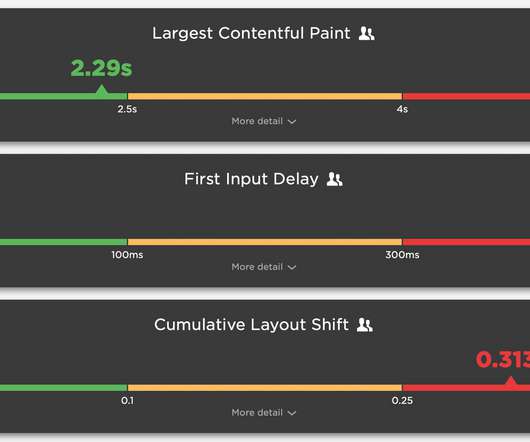SEO and web performance: What to measure and how to optimize
Speed Curve
NOVEMBER 7, 2021
The metrics that comprise Web Vitals are still evolving. These metrics will (I think) always be in a state of evolution. We need to do our best to stay up to date – not just with which metrics to track, but also with what they measure and why they're important. Which performance metrics should you focus on for SEO?












Let's personalize your content